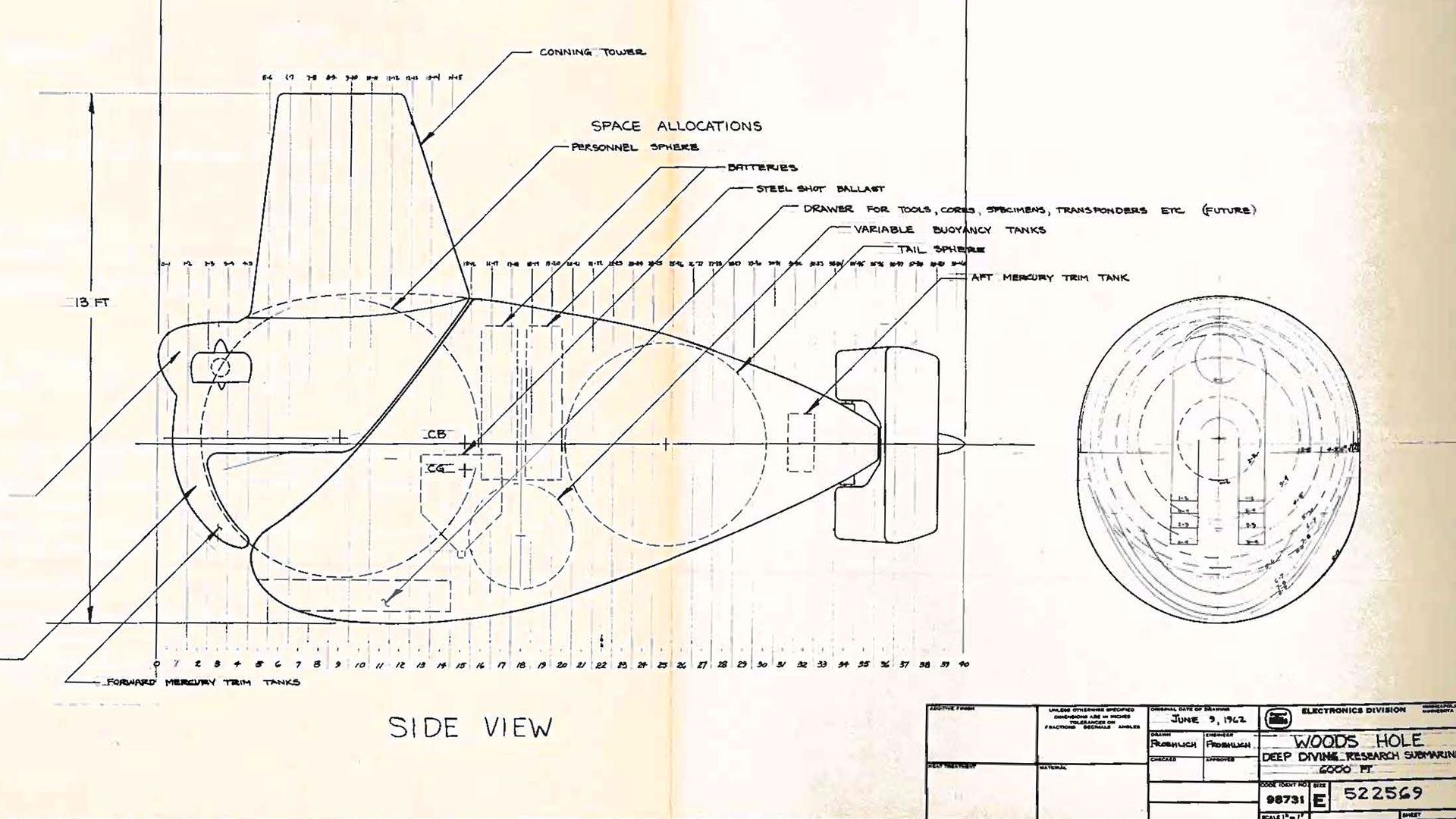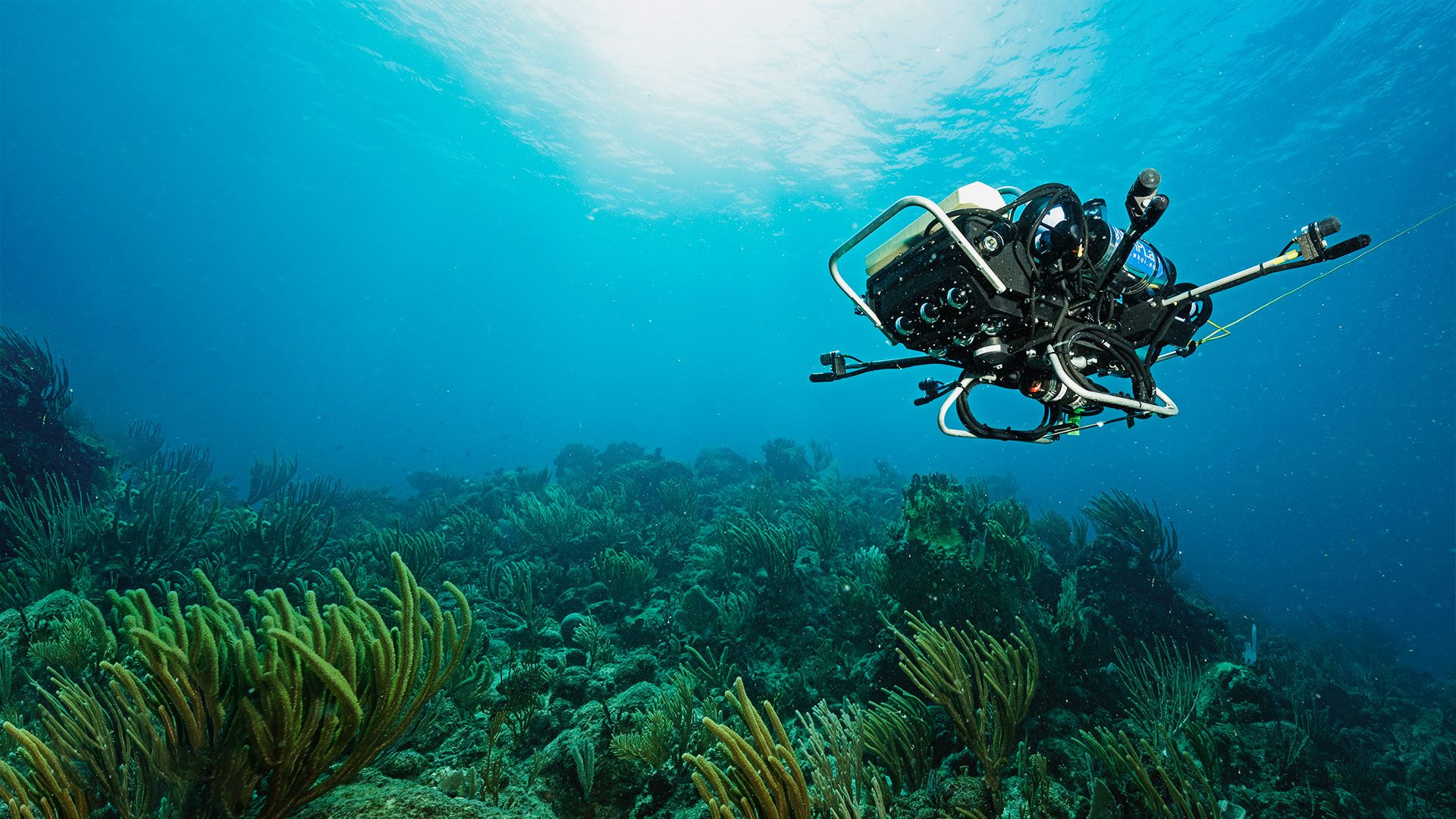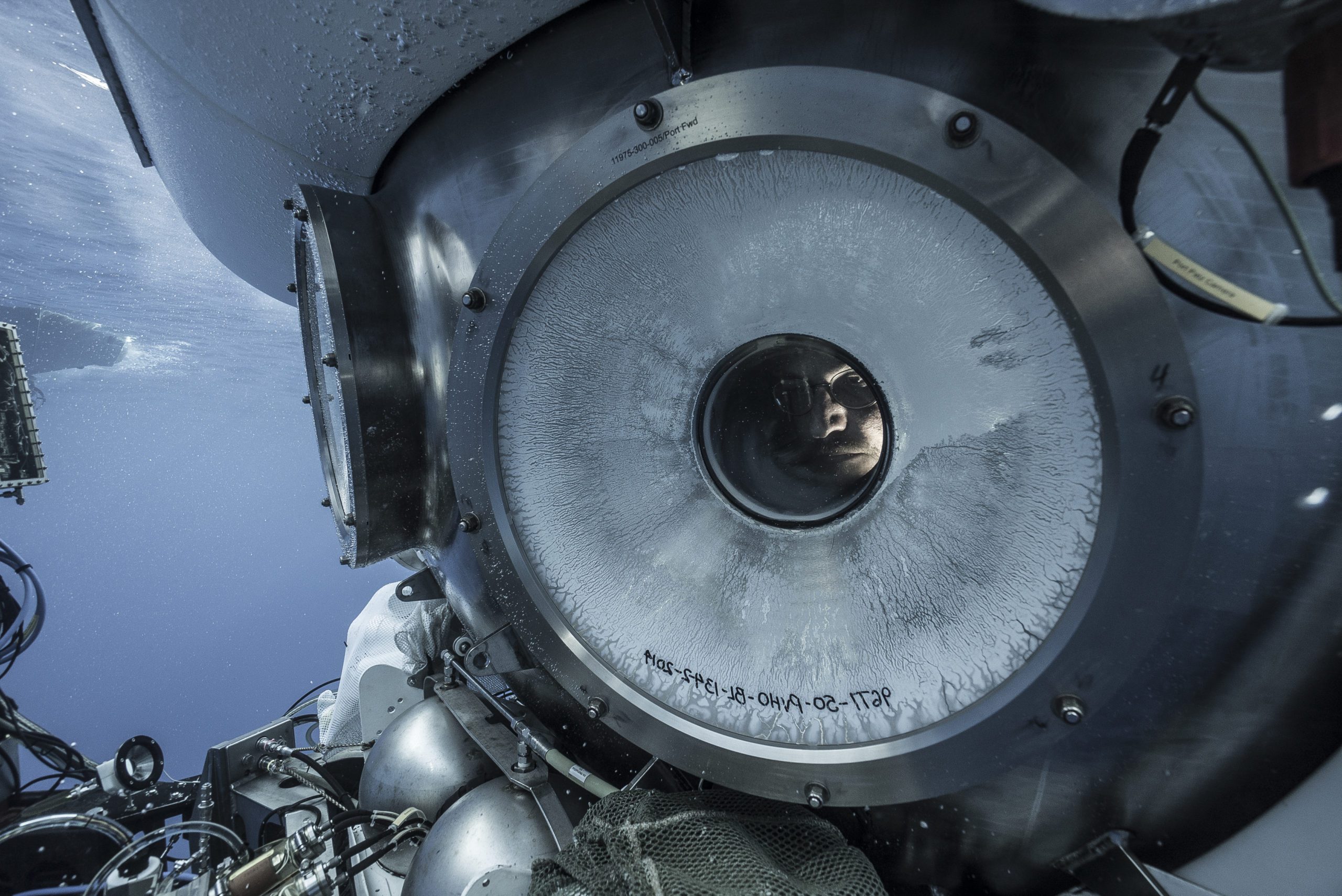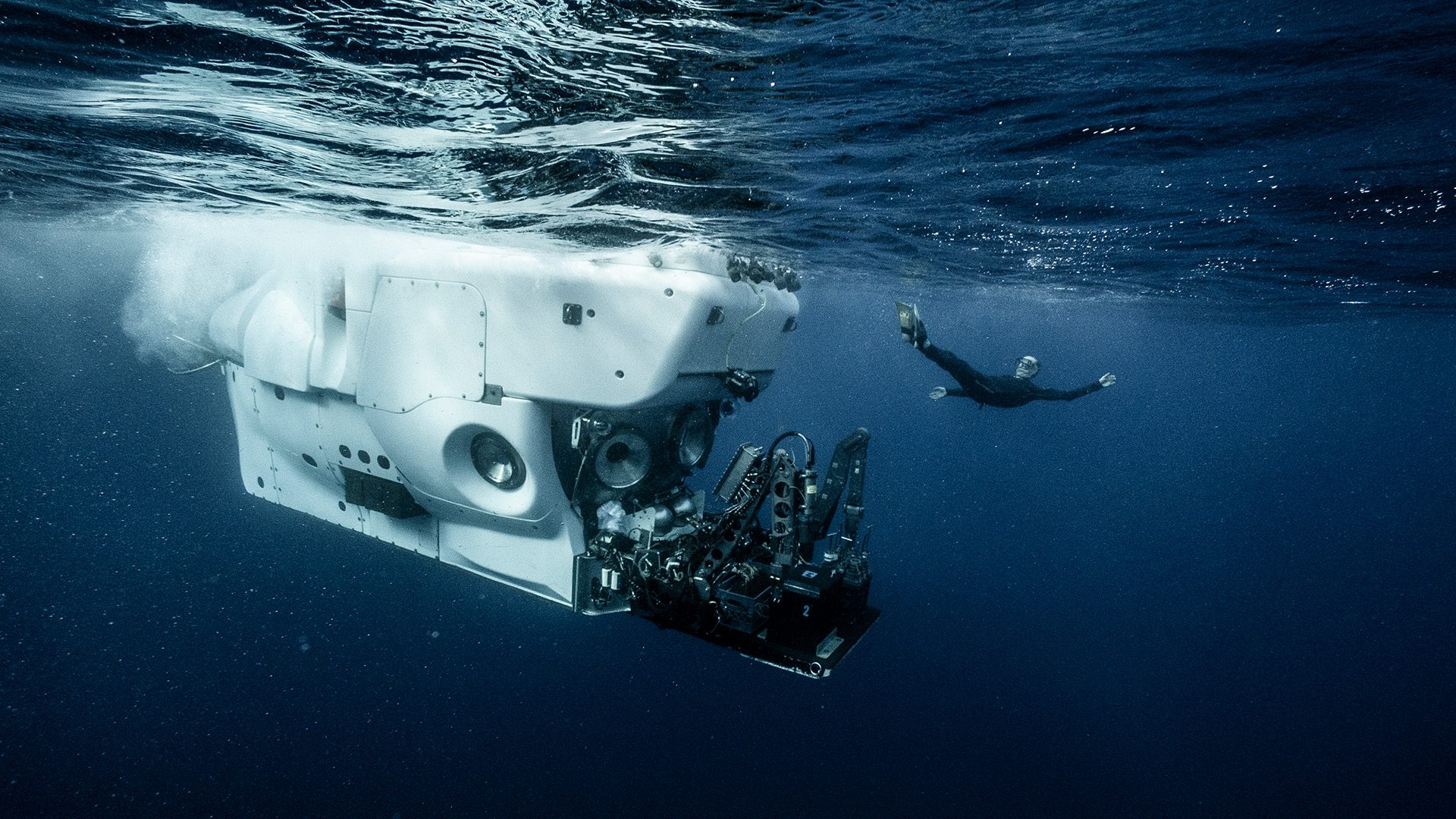
Who is Alvin and what are sea trials?
If you like the deep sea and exploring for science, you’re going to love Alvin!
Estimated reading time: 6 minutes
The human occupied vehicle Alvin is at sea doing test dives to increase its depth rating from 4,500 meters to 6,500 meters (~15,000 feet to ~21,000 feet). This depth will put 99% of the ocean floor within reach for the U.S. deep sea science community. If you haven’t been following Alvin’s journey to 6,500 meters, we’ll catch you up here.
Alvin who?
Alvin is the world’s longest-operating crewed science submersible. It holds three people—a pilot and two observers—and takes them to the seafloor, where they can deploy scientific instruments, gather samples, and take photos and videos of this rarely-visited landscape. In addition to transporting people to the depths, Alvin is a robust scientific platform with two hydraulic arms and is able to carry out sophisticated tasks while submerged. It often works in areas with live volcanic activity or in the unique ecosystems around hydrothermal vents that require careful manipulation.
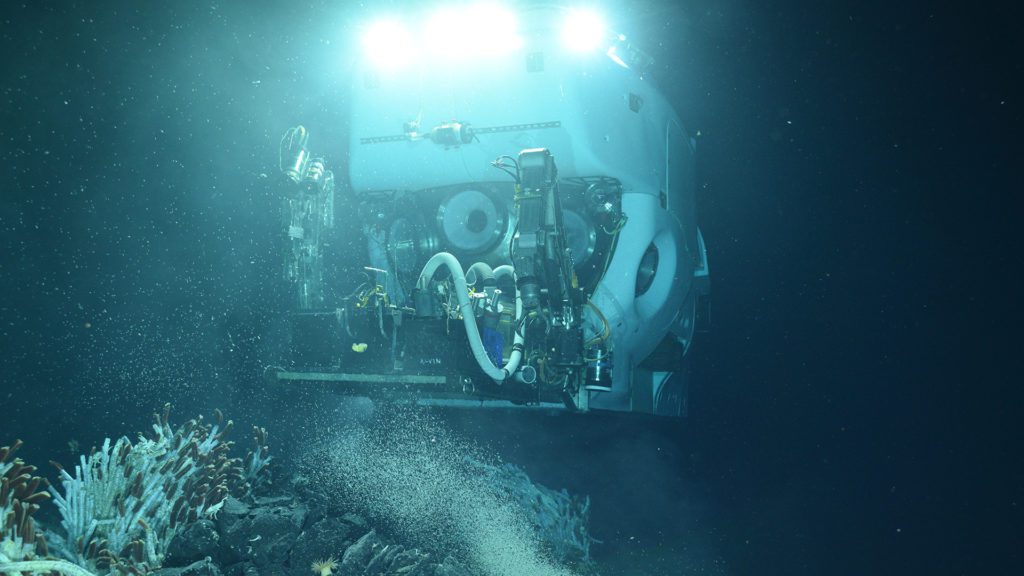
Alvin hovers above hydrothermal vent site during dive 5046 to the East Pacific Rise at 9°N. (Courtesy of Daniel Fornari, MISO Elevator Camera System © Woods Hole Oceanographic Institution)
Oh, that Alvin!
You might know Alvin as the vehicle that explored the sunken R.M.S. Titanic in 1986. The sub is also known for helping the U.S. Navy locate a H bomb that went missing during World War II, revealing otherworldly life at hydrothermal vents, and taking scientists to the seafloor under the Deepwater Horizon oil spill. Between its many historic achievements, Alvin has safely brought humans into the deep sea more than 5,000 times over nearly six decades. Now Alvin is on course to bring explorers even deeper. Read more.
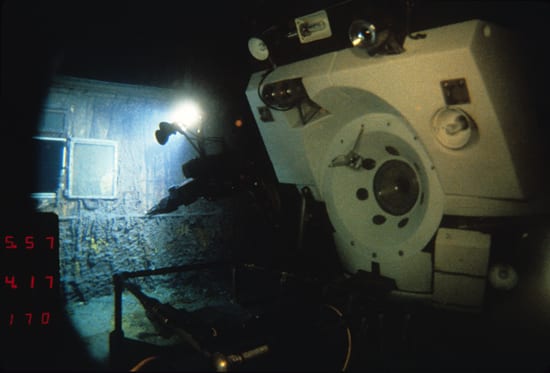
Alvin hovers the wreckage of RMS Titanic one year after its discovery in 1985. (© Woods Hole Oceanographic Institution)
What is an overhaul?
Alvin has been in service for 58 years, but has gone through regular maintenance and upgrades to the point that no part of the original vehicle remains. An overhaul happens about twice a decade.
The sub is entirely disassembled and every part is serviced. In some years this is an opportunity to make major design changes. The most recent overhaul—to get Alvin to 6,500 meters—took place in two phases. The first was in 2011 and included forging a new, larger, titanium personnel sphere and rebuilding much of Alvin. The second phase started in 2020 and is being completed presently. With the second phase Alvin got new titanium ballast spheres, a second Schilling manipulator arm, a 4K imaging system, several new syntactic foam modules, an upgrade to the hydraulic system, and new thrusters, among other things. All of these changes were made with the goal of getting the sub to its new depth. Read more.
What is Alvin doing at sea now?
To complete an overhaul, Alvin needs to be tested in the ocean. At present Alvin is aboard the research vessel Atlantis with its team of engineers, technicians, and pilots. There is also a representative from Sea Systems Command or NAVSEA, the authority that certifies the sub. When Alvin successfully reaches 6,500 meters, NAVSEA will make its new depth rating official.
Sea trials are a unique opportunity for the Alvin Team. Ordinary dives are focused on scientific objectives. Sea trials dives are all about engineering and how the sub works in its new configuration. There is time on the bottom to test the new thrusters, try the new navigation system, and work with the pilots in training. The Alvin Team also has some new members, hired over the course of the overhaul, and they are learning their roles at sea. We are documenting sea trials with a regular blog. Read it here.
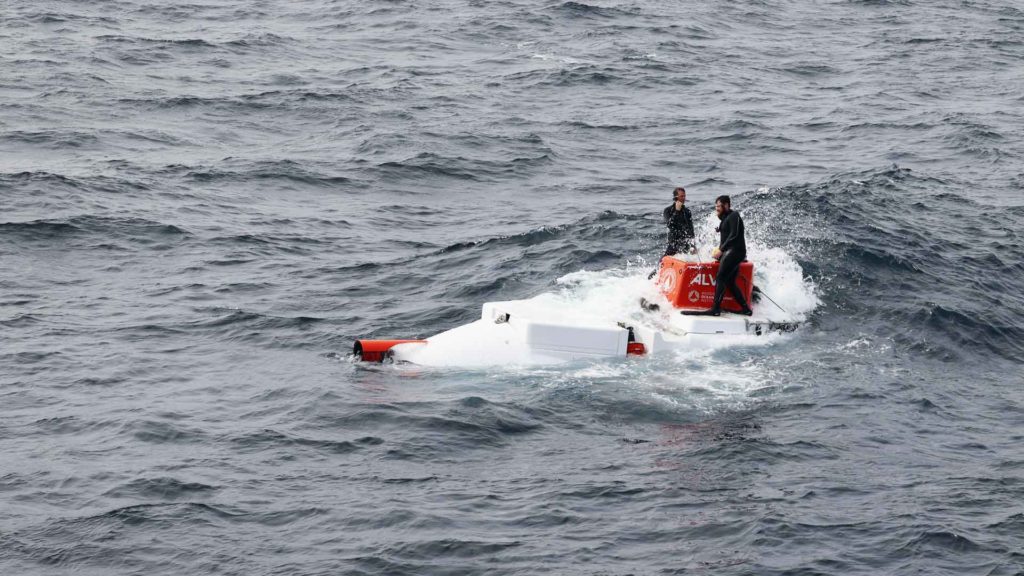
Swimmers (and Alvin engineers) Fran Elder and John Dymek assisting with retrieval of Alvin after its first open water dive of the year. (Photo by Hannah Piecuch, ©Woods Hole Oceanographic Institution)
Wait, didn’t this already happen?
Oh, maybe you were paying attention. This is a continuation of sea trials for Alvin. The engineering dives started in fall 2021 and are resuming now. Those dives revealed the need to adjust the design of the syntactic foam, which gives Alvin its buoyancy. If this is all new to you, syntactic foam is made of tiny glass spheres embedded in an epoxy resin that is highly resistant to changing shape under high pressure. It is also lighter than water, and a favored material in submersible design. If you want to dig into this deeper, here is what happened, and how the Alvin Team addressed it.
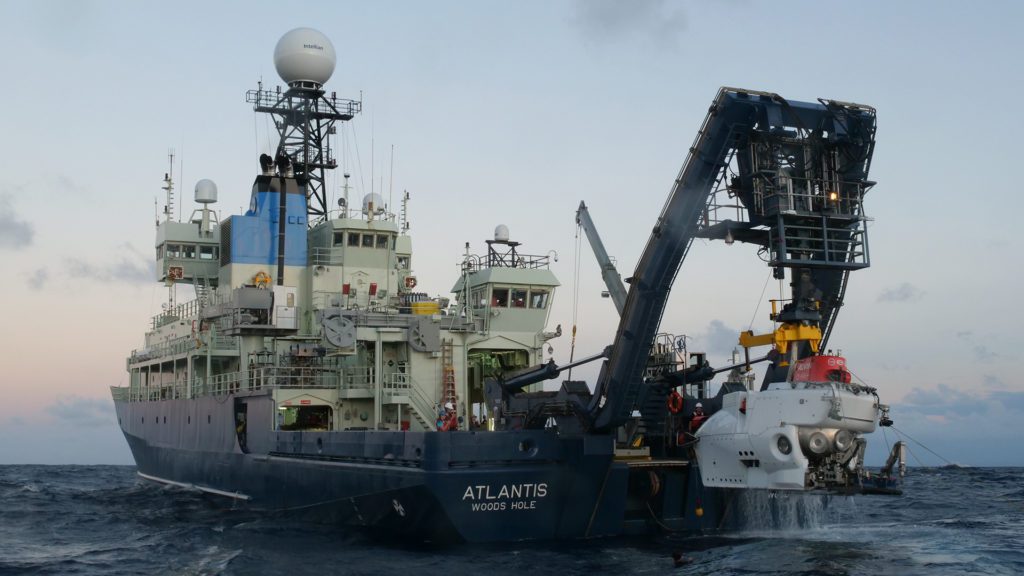
Alvin is recovered to R/V Atlantis after Dive 5074 of sea trials in November 2021. (Photo by Ken Kostel, © Woods Hole Oceanographic Institution)
What happens after sea trials?
Once Alvin is certified to dive to 6,500 meters Atlantis will carry it into port in San Juan, Puerto Rico, and pick up some new passengers: a team of scientists. This battery of scientists come from a wide range of disciplines and backgrounds and have proposed projects that can test Alvin’s ability to carry out science in the depths of the Puerto Rico Trench. We call this phase the “Science Verification Cruise” and it is an essential part of completing the overhaul, since Alvin’s purpose is not just to go deeper, but to capably carry out scientific missions while four miles below the surface. No pressure.
The Science Verification Cruise will have its own set of educational events, livestreams, and a daily blog in English and Spanish. For all of this, follow WHOI’s social media channels and keep reading our blog. Once Alvin clears its sea trails and the science verification cruise, it has a tight schedule to keep with a full year of science expeditions scheduled well into 2023.
Who gets to use Alvin?
Any U.S. scientist with a good idea for deep sea research can apply. Alvin is owned by the Office of Naval Research, funded by the National Science Foundation and National Oceanic and Atmospheric Administration, and operated and maintained by the National Deep Submergence Facility at Woods Hole Oceanographic Institution. Most scientists who use Alvin get their funding through the National Science Foundation.
But scientists aren’t the only people who get to dive in Alvin: engineers who build the sub often dive and some of them become pilots. Occasionally journalists or educators get a seat in the sub and bring back stories of what they have seen in the deep.
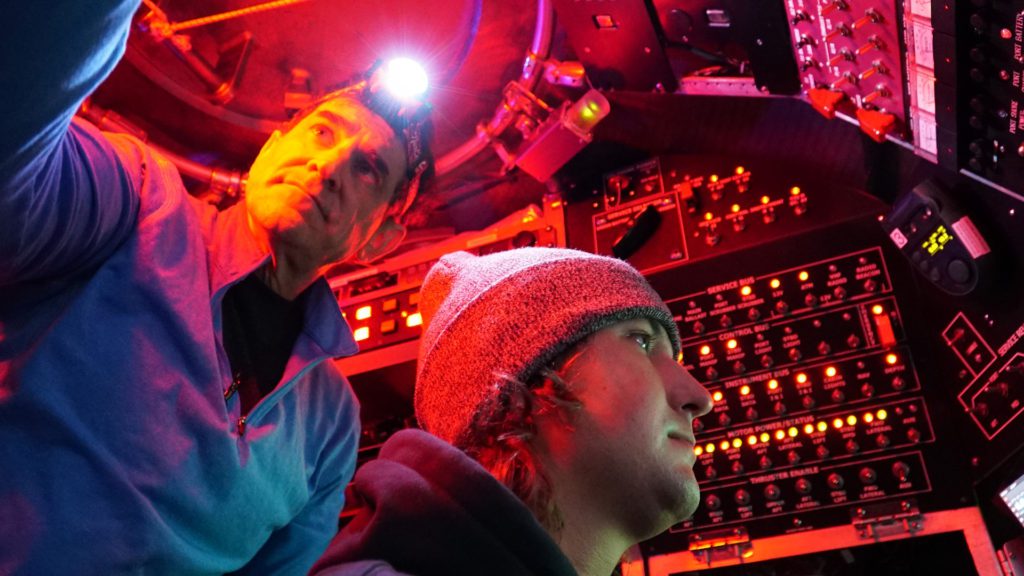
Alvin pilot Bruce Strickrott and pilot-in-training Nick O'Sadcia dive the sub during sea trials in 2021. (Photo by Ken Kostel, © Woods Hole Oceanographic Institution)
Can’t get enough Alvin? Here are some of our favorite posts from the first round of sea trials.
What does an Alvin deployment look like? Each dive day, the entire ship becomes focused on one goal: getting the sub and its occupants safely into and out of the water so that it can complete its mission. Read more.
From inside Alvin’s deepest Dive: Alvin is in an experimental phase, diving places it has never gone before, and it did so with ease and grace. It also underscores that what this team does is inherently difficult. Read more.


